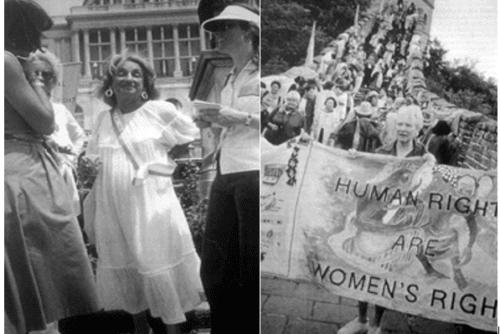Touching Traces

One image from this show illustrates the various qualities of photography that I have raised here with particular force. The tattooed drawing emblematizes the profound bodily effect of the event we have come to call September 11 and the ways in which – for this artist and subject – the nation, has been materially wounded by it, has had its memory carved unto its skin, as it were. The flag marks the tattooed body as a subject of the state, the state that was attacked and injured, and thus it inscribes the state’s injury onto the skin of the citizen. The tattoo shows both the moment of injury and the act of perpetration. Highly technological, the syringe is like an airplane, or like a bomb, at the moment of impact (note the angle). At the same time, the drawing on the skin shows the citizen’s defiant appropriation and flaunting of the attack displayed for all to see and, more importantly, to feel. The waving flag recalls the words of the national anthem – the flag may be tattered, bloody, but it is still there waving above the sunrise. The visual display of the very act of wounding elicits spectatorial identification on a physical, bodily level – for me a squirm or shudder in response to the prick of the needle with which I identify. I would say that this may be as close as one can come in communicating physical pain visually. At the same time, by invoking well-known icons, the drawing evokes a familiar scenario and thus attempts to elicit predictable emotional responses such as anger, defiance, patriotism. In its close cropping and physical intimacy it seems to me to thwart or foreclose more distant, critical, intellectual responses, thus showing both the power and the appropriability of the visual that lacks a label or narrative frame.
This photograph illustrates for me some of the qualities through which photography can communicate the bodily wounding that is trauma, and the sense memory of it. If photography can even attempt to evoke the material inscription of memory unto the body, it is because of the continuing popular perception of the material link between the photographic image and the object photographed. Semioticians have defined the photograph as an index based on a relationship of contiguity, of cause and effect, like a footprint or a trace. In his Camera Lucida, Roland Barthes argues that the material touch of the photographic image is as painful as a tattoo: something in each photograph “shoots out of it and pierces me,” he says (26). “The photograph’s punctum is that accident which pricks me (but also bruises me, is poignant to me)” (27). Through the punctum, photography can be the medium for the communicability of trauma: just as the tattoo artist’s needle pricks the skin, the photograph’s material connection to the real can pierce the layer of consciousness that protects us from traumatic reenactment.
The art historian Jill Bennett has argued that images do more than represent scenes and experiences of the past: they can communicate an emotional or bodily experience to us by evoking our own emotional and bodily memories. They produce affect in the viewer, speaking from the body’s sensations, rather than speaking of, or representing the past: “It is no coincidence that the image of ruptured skin recurs throughout the work of artists dealing with sense memory . . . . It is precisely through the breached boundaries of skin in such imagery that memory continues to be felt as a wound rather than seen as contained other . . . it is here in sense memory that past seeps back into the present, becoming sensation rather than representation” (Bennett 92).
But photographic images are also flat and two-dimensional, moments frozen in time and mere surfaces – photo-graphy is literally written on the skin of the paper. This double-sided quality of photography can perhaps best be seen in the white gloves covering the hand in the image and the plastic encasing the syringe. The tattoo artist’s skin is tightly covered – impermeable. On one level, the white plastic illustrates yet another aspect of the September 11 events – the fear of “infection” and the careful attempts in New York to contain it in a delimited part of the city. Even the term “ground zero” suggests this effort at containment. But as the tears, or droplets, on the image show, things spill over and containment is ultimately impossible. On another level, the white plastic, and the white gloves can be read as visual echoes of the white frame of the image which contains its impact by signaling that it not the act of wounding but its representation.



